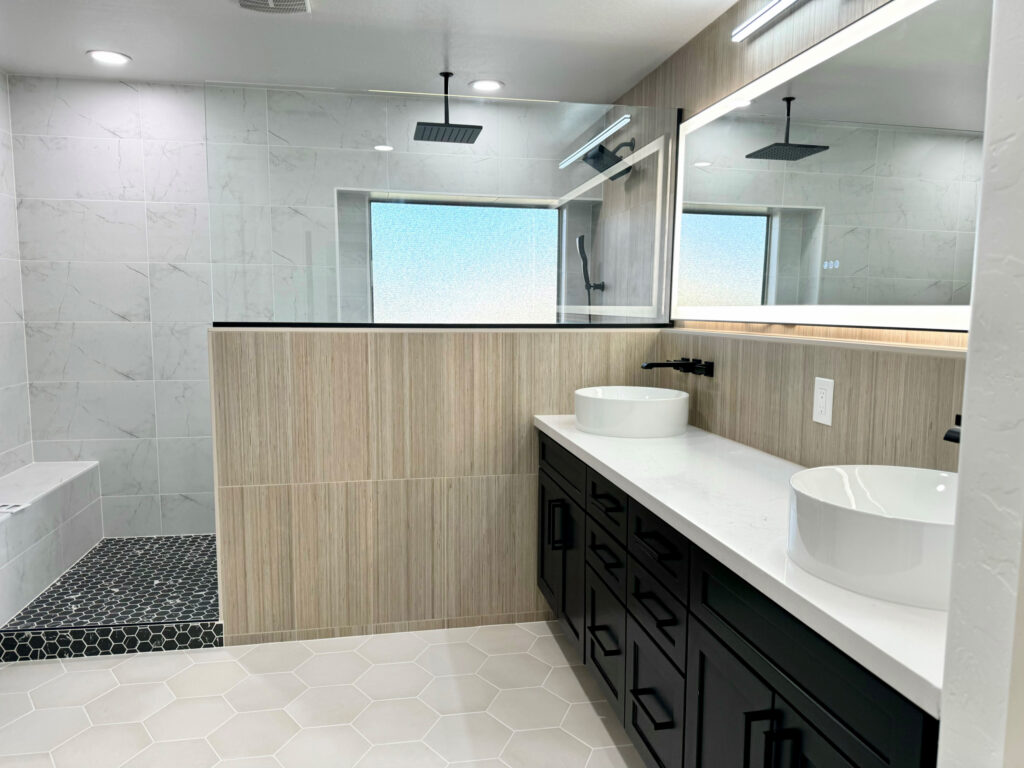Wondering if you can tile onto plasterboard? Discover the essential steps, crucial preparations, and expert tips to ensure your tiling project succeeds without costly mistakes.
Understanding Plasterboard as a Tiling Surface
Plasterboard, also known as drywall in some regions, has become increasingly popular as a substrate for tiling projects. According to recent industry data, over 65% of modern UK homes use plasterboard wall systems. When it comes to tiling onto plasterboard, the key consideration is choosing the right type and thickness. Standard plasterboard must be at least 12.5mm thick to support tile weights up to 32kg per square metre. For heavier tiles or wet areas, moisture-resistant plasterboard (often green in colour) is essential. The British Standard BS5385-1:2009 provides comprehensive guidelines for tiling onto plasterboard, emphasising the importance of proper installation and support structures.
Essential Preparation Steps Before Tiling
Proper preparation is crucial for successful plasterboard tiling. First, ensure your plasterboard is firmly fixed to the wall structure with appropriate screws at 300mm intervals. The surface must be completely dry, with moisture content below 0.5%. Any damaged areas should be repaired and allowed to cure fully. Before applying tiles, the surface requires thorough cleaning to remove dust and debris.
- Check plasterboard is securely fixed with no movement
- Ensure surface is completely dry and free from dust
- Repair any damaged areas with suitable filler
- Apply a primer coat (SBR mixed with water) for better adhesion
- Use a laser level to mark your starting lines
Choosing the Right Materials
Selecting appropriate materials is vital for long-term success. Modern tile adhesives specifically formulated for plasterboard offer superior bonding and flexibility. Ready-mixed adhesives are convenient but powder adhesives mixed with water often provide better strength for heavier tiles. Consider using flexible adhesives that can accommodate natural movement in the substrate.
- Flexible tile adhesive suitable for plasterboard
- Appropriate grout (consider mould-resistant options for wet areas)
- Primer or bonding agent
- Movement joint profiles
- Appropriate tile spacers
Step-by-Step Tiling Process
Begin your tiling project by establishing a centre line using a laser level or spirit level. Start tiling from the centre of the wall, working outwards to ensure even distribution of cut tiles at the edges. Apply adhesive using a notched trowel at a 45-degree angle, creating consistent ridges. Press tiles firmly into place with a slight twisting motion to ensure full coverage. Use tile spacers to maintain even gaps, and clean excess adhesive as you go.
Special Considerations for Wet Areas
When tiling in bathrooms or other wet areas, additional waterproofing measures are essential. Recent studies show that 78% of bathroom-related insurance claims stem from water damage. Installing a tanking system before tiling provides crucial protection against moisture penetration.
- Apply a complete tanking system to walls
- Use waterproof membrane at wall/floor junctions
- Ensure adequate ventilation is installed
- Consider anti-mould grout products
Common Mistakes and How to Avoid Them
Many DIY enthusiasts make crucial mistakes when tiling onto plasterboard. The most common error is exceeding the weight limitations of the substrate. Always calculate the combined weight of tiles, adhesive, and grout per square metre. Another frequent mistake is failing to provide adequate movement joints, which should be installed at internal corners, ceiling junctions, and at 3-metre intervals on large walls.
Maintenance and Aftercare
Proper maintenance ensures the longevity of your tiled plasterboard surface. Regular cleaning with appropriate products helps prevent grout deterioration and maintains appearance. Inspect movement joints annually and replace any damaged sealant promptly. For wet areas, ensure ventilation systems are working effectively to prevent moisture build-up behind tiles.
- Clean surfaces regularly with pH-neutral cleaners
- Check and maintain movement joints annually
- Monitor for any signs of grout deterioration
- Address any loose tiles promptly to prevent water ingress
Final Verdict: Is Tiling Onto Plasterboard Right for Your Project?
Tiling onto plasterboard can be an excellent solution when done correctly. It’s particularly suitable for domestic wall tiling projects where the weight of tiles doesn’t exceed 32kg/m². However, for wet areas or when using heavier tiles, additional preparation and waterproofing measures are essential. Success depends on careful preparation, appropriate material selection, and proper installation techniques. For complex projects or wet areas, considering professional installation might be the most cost-effective long-term solution.
FAQ
Can you tile straight onto painted plasterboard?
Following the advice set out by British Standard it is not recommended to tile onto a papered or painted surface. “Painted surfaces are generally unsuitable for tiling; a detailed examination of the painted surface should be made to decide whether it is suitable.
Can you put tile backer board over plasterboard?
Tile backer boards can be installed over plaster or plasterboard. There are a variety of tile backer boards suitable for overboard plaster or plasterboard, including 6mm HardieBacker cement board.
Can you tile straight onto waterproof plasterboard?
Yes, it is possible to tile directly to our Gyproc moisture resistant (MR) grade boards without any pre-treatment, following the tile adhesive manufacturer’s guidance.
Can I put tiles and plasterboard in a skip?
Always be careful not to take any plasterboard with the tiles as this cannot go into a general skip! Any bricks you have from demolition work can go in. When rewiring, the old, unwanted cabling can be put in the skip. Any unwanted bits of metal, such as corner edging, pipes or radiators can be disposed of in your skip.
Sources
[1] https://www.rubi.com/en/blog/can-you-tile-onto-plasterboard/
[2] https://www.youtube.com/watch?v=U7rhSmF2oA0
[3] https://www.workshop.bunnings.com.au/t5/Living-and-Bedroom/Tiling-onto-gyprock/td-p/54820



